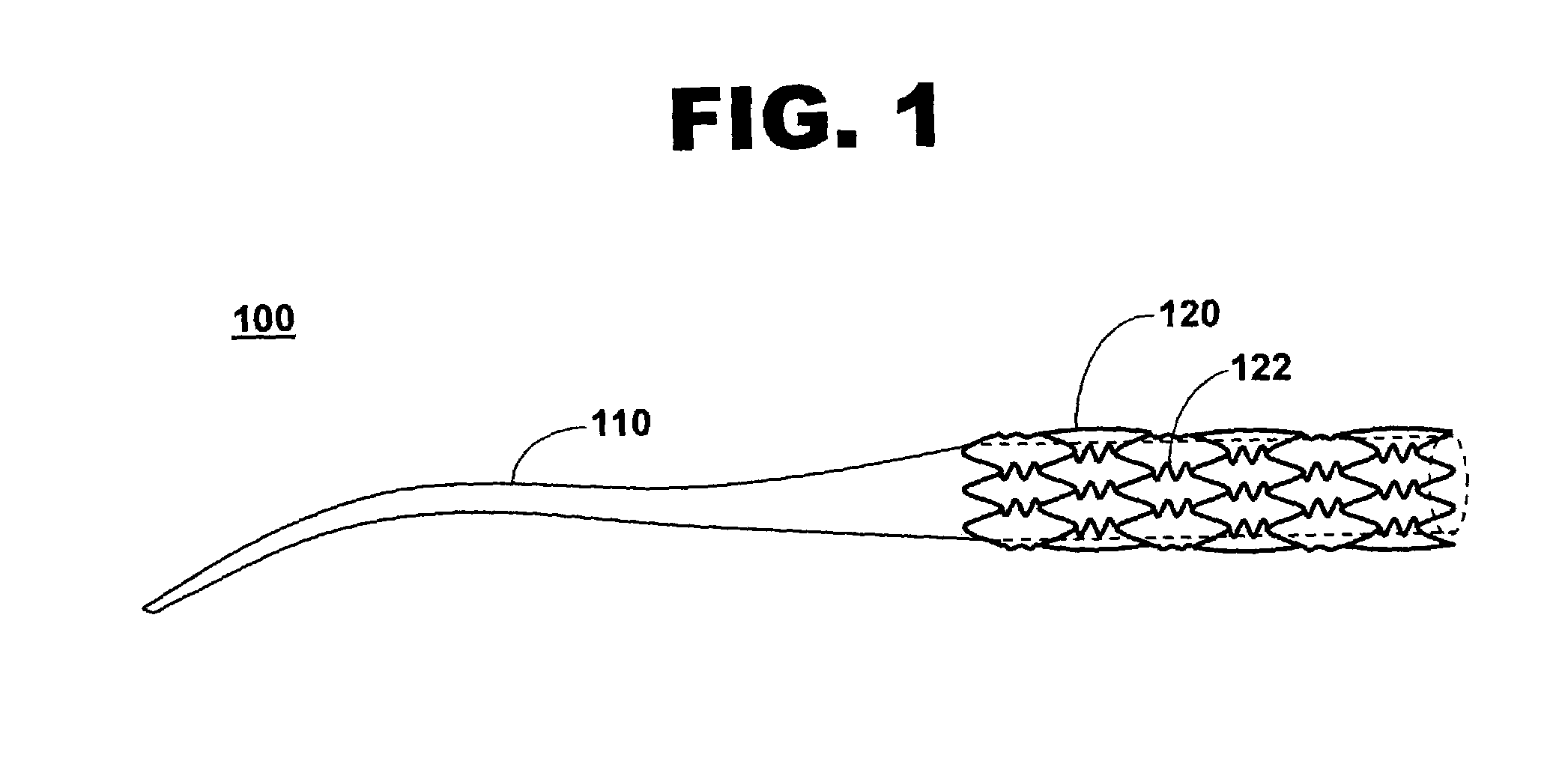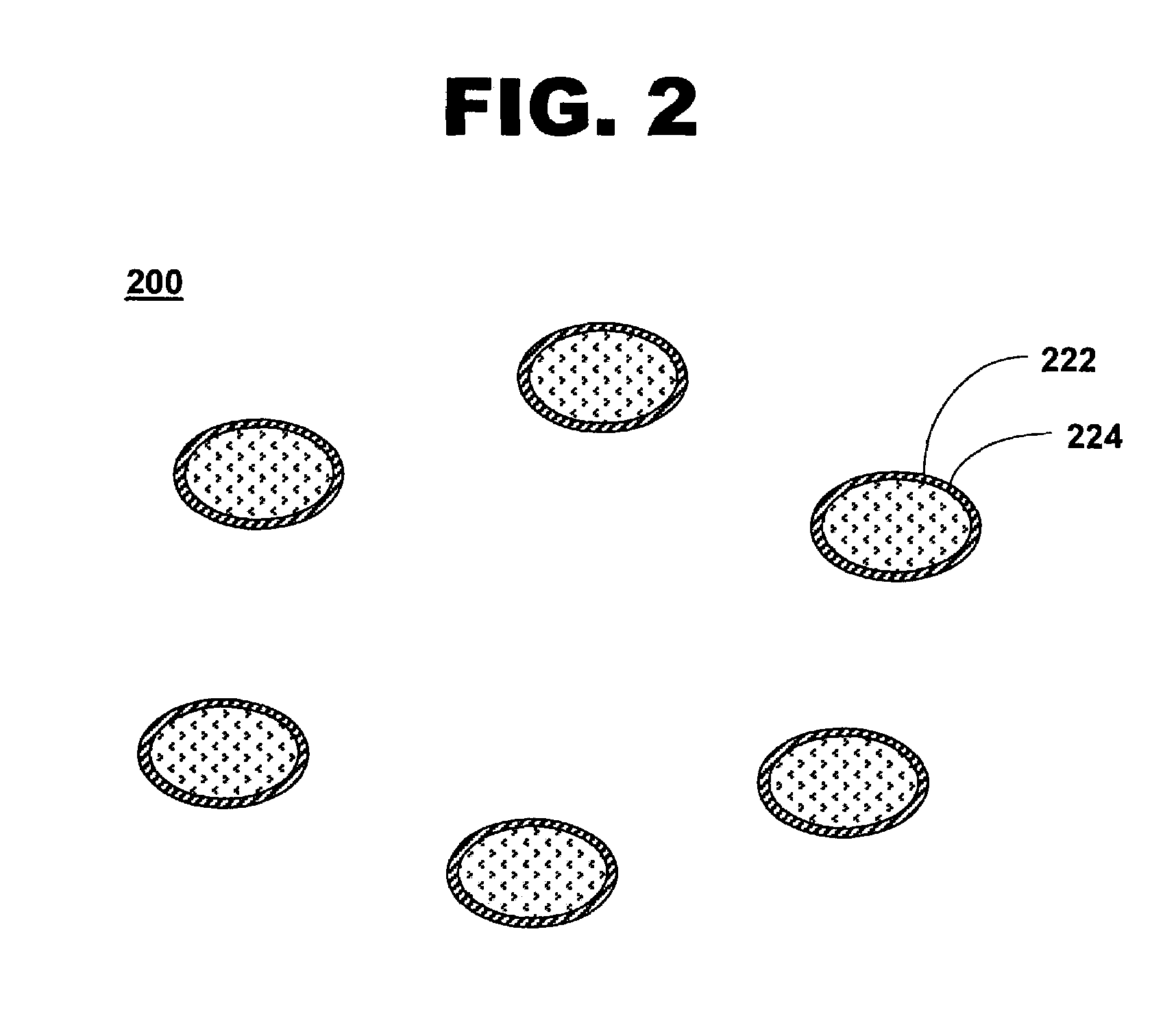Stent with phenoxy primer coating
a technology of phenoxy primer and stent, which is applied in the field of biomedical stents, can solve the problems of difficult adhesion of polymers to metallic substrates, difficulty in getting coatings to adhere to stents, and uneven surface of stents
- Summary
- Abstract
- Description
- Claims
- Application Information
AI Technical Summary
Problems solved by technology
Method used
Image
Examples
example 1
Phenoxy Resin Solution Formulation
[0055]One embodiment of the present invention is exhibited by the formulation of a phenoxy resin solution based on a phenoxy resin mixed in a chloroform solvent.
[0056]An amount of phenoxy resin weighing 2.236 g is placed in a glass bottle. The phenoxy, referred to as phenoxy PKHC and identified as phenol, 4,4′-(1-methylethylidene)bispolymer with (chloromethyl) oxirane, may be obtained from Phenoxy Specialties, 800 Cel-River Road, Rock Hill, S.C. 29730. Chloroform in the amount of 148.4 milliliters is added. The contents are shaken until all the polymers are dissolved. The solution may be split, some of which may be used for coating stents, the remaining of which may be used for coating metallic coupons.
example 2
Dip Coating Process
[0057]A coating process for disposing a phenoxy primer coating on a metallic stent exhibits another embodiment of the present invention.
[0058]After cleaning, an 18 millimeter S670 stent is dipped into a phenoxy resin solution for five seconds. The stent is withdrawn from the solution and spun at 1000 rpm. The phenoxy-coated stent is cured at 210 degrees centigrade for ten minutes. Drying at the elevated temperature is done in a vacuum oven after one or more nitrogen purges. Parameters for dip-coating the stent includes an entry speed of twenty millimeters per second, a dip time of ten seconds, and a withdrawal rate of five millimeters per second. The stent is rotated at 500 rpm during retraction from the phenoxy resin solution.
[0059]After cleaning, one-inch by three-inch metal coupons are dipped into the phenoxy resin solution for five seconds. The coupons are then pulled out and cured at 210 degrees centigrade for ten minutes. The coated coupons are not spun.
[006...
example 3
Dry Crosshatch Adhesion Test
[0061]An adhesion test is run to verify the adhesion strength of the phenoxy primer coating to the coupons, in accordance with another embodiment of the present invention. The primer is coated onto stainless steel coupons. Eleven vertical and horizontal cuts, one millimeter apart, are scribed onto the coupons. One inch Permacel 99 tape is applied over the crosshatch area and smoothed with a finger. Within 90+ / −30 seconds after application, the tape is pulled at an angle of 180 degrees. The cross-hatched grid is then examined with an optical microscope for any removal of the coating. No delamination is observed for phenoxy primer coated coupons.
PUM
| Property | Measurement | Unit |
|---|---|---|
| thickness | aaaaa | aaaaa |
| thickness | aaaaa | aaaaa |
| weight | aaaaa | aaaaa |
Abstract
Description
Claims
Application Information
 Login to View More
Login to View More - R&D
- Intellectual Property
- Life Sciences
- Materials
- Tech Scout
- Unparalleled Data Quality
- Higher Quality Content
- 60% Fewer Hallucinations
Browse by: Latest US Patents, China's latest patents, Technical Efficacy Thesaurus, Application Domain, Technology Topic, Popular Technical Reports.
© 2025 PatSnap. All rights reserved.Legal|Privacy policy|Modern Slavery Act Transparency Statement|Sitemap|About US| Contact US: help@patsnap.com



